After 14 days cruising and 3,200 kilometreos travelled, we moor in Budapest about 200 metres from where we started! We’ve travelled the long way round to get here!
Now we get a tour of the city (with lots of weekend traffic). We saw the major sights of Pest (Pesht) from the bus. Basilica, Opera House, Zoo, and Heroes’ Square.
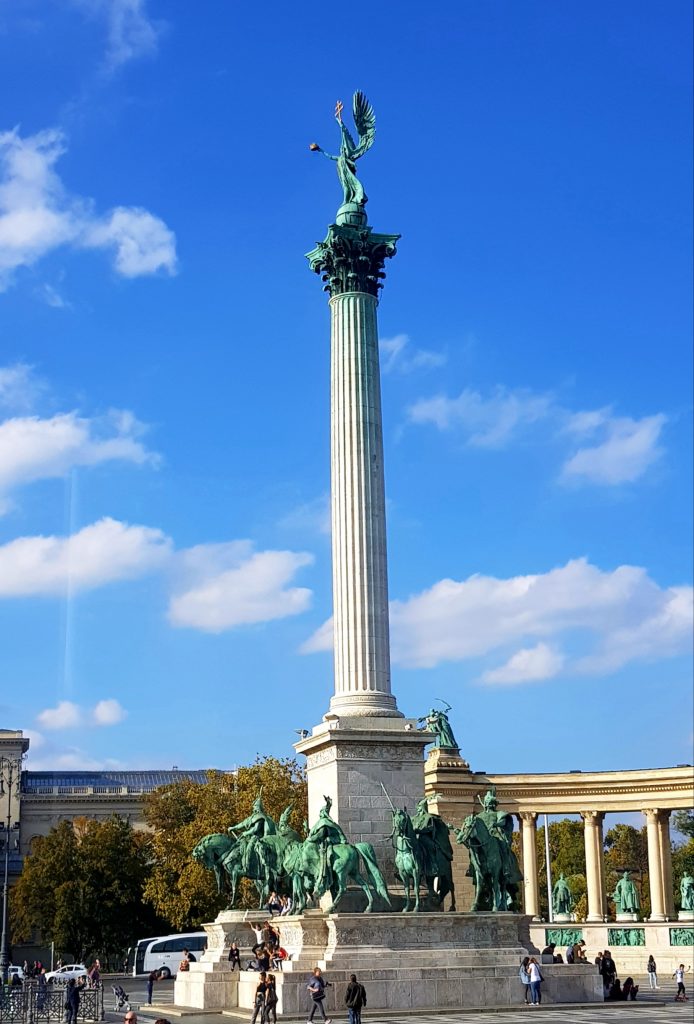
That, of course, is a three day city tour in seven words and one photo!
But that’s a bit unfair. We did get lots more facts and figures about the city! We heard how the number two is very important. Budapest is after all really two cities. It has the second biggest parliament, the second biggest zoo, the world’s second metro system, the second most difficult language and the second biggest synagogue in world (apparently 25% of the city’s population were Jewish at one time).
And that’s the second time I’ve written that!
The opera house is about half the size of Vienna’s but you can see any of the 80-90 operas typically staged each year for about €30 – a fifth of the cheapest ticket in Vienna!
St Stephen’s Basilica and the Parliament building are both 96 metres tall. No building in the city is allowed to exceed that height. By order! The Parliament has a total of 365 spires. One for every day of the year. It is also famous for having the first air conditioning system. (But I’m not sure if that’s first in Budapest, in Hungary, in Europe or in the world!)
Apparently, the basilica contains two significant relics – the mummified right hand of St Stephen (the country’s first king around 1000 AD – although his name might have been Istvan at the time) and, we were told, the left leg of a famous footballer. Can that REALLY be true?
OMG I’ve just checked with Mr Google. Ference Puskás was an Hungarian footballer and manager, widely regarded as one of the greatest players of all time. He scored 84 goals in 85 international matches for Hungary. Even my solicitor in sleepy downtown Totnes knew him by name! (I like to do a full check on these things!) When he died in 2006 he was indeed buried in the basilica! These guides really know their stuff!
The spa in central park, behind Heroes’ Square is fed by water at 75° C coming out of a well which is 1,256 metres (0.8 miles) deep. The water has to be cooled before being fed to the baths. There are said to be 108 thermal sources in Budapest. Some of the Roman baths are no longer in use, but the Rudas Spa, built 450 years ago, is apparently THE real thing. The steam bath is almost suffocating. The temperature of the water feeding the baths is second only to that of Icelandic sources of geothermal heated water. The spa is also famous for its roof lights of different colours. But I’ll come back to spas later.
The city didn’t escape war damage. The Allies bombed Buda for 102 consecutive days. All bridges crossing the Danube were blown up but they have all been rebuilt to the original plans. Talking of bridges, the Chain Bridge was designed and built by a Scot working with an Englishman. At the time it was the second permanent river crossing and had had to wait for the development of technology allowing long span bridges. The river flow is too high during periods of flood for multi-supported bridges. They would just get washed away by the river flow which can reach 15 times that of the Rhine. And we’ve seen previously how high and fast floodwaters can get in that river!
With a commanding view of the valley, the Statue of Liberty has been erected on a hilltop on the Buda side. It has been nicknamed the world’s largest beer bottle opener.
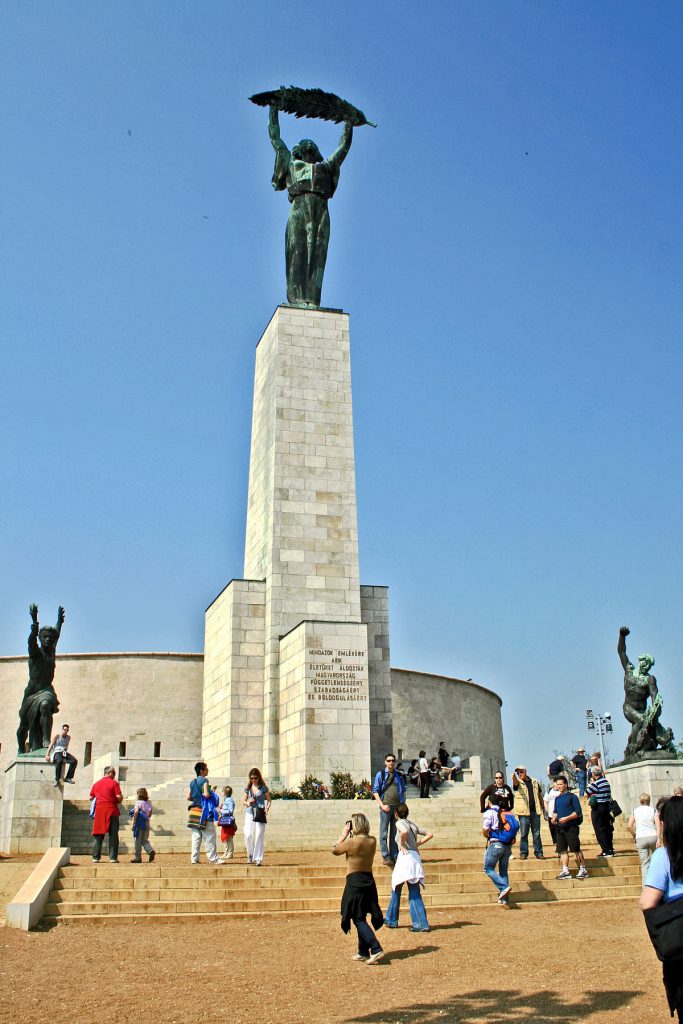
(Not my photo.)
We were dropped off in Buda Castle for a walking tour. Originally built by St. Stephen in 1015, the castle was later re-built for Theresa Maria. Actually, Maria Theresa Walburga Amalia Christina (1717 – 1780). She was the only female ruler of the Habsburg Dominions. She was the sovereign of Austria, Hungary, Croatia, Bohemia, Transylvania, Mantua, Milan, Lodomeria & Galicia, the Austrian Netherlands and Parma. Top girl in the region. Definitely needed a castle!
Our bus disgorged us right by the public loos. But at €1 a visit, we have a better plan. Cross our legs and wait! Plan B.
We had visited Budapest at the end of a cruise from Nuremberg in July 2015. I made a comprehensive photographic record at that time. I’ve just checked it and it confirms what we thought this time. The crowds were far greater this year than they were four years ago. This time it was hard to get anywhere near the Fisherman’s Bastion!
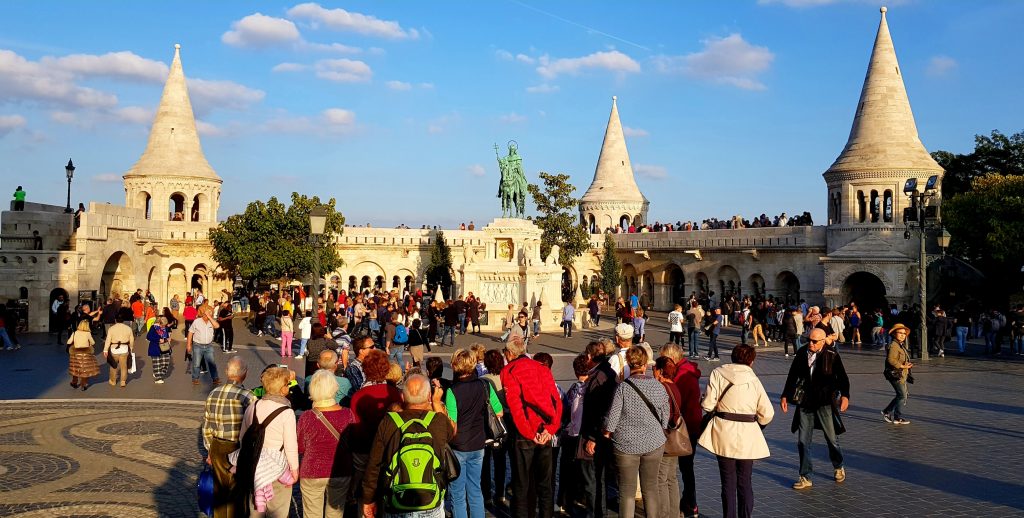
Let alone get to see the spectacular view …

… and it was really hard to get photos of the Holy Trinity Column and St. Matthias Church! But here’s my best shot. The church has the shadow of the column on the front wall …
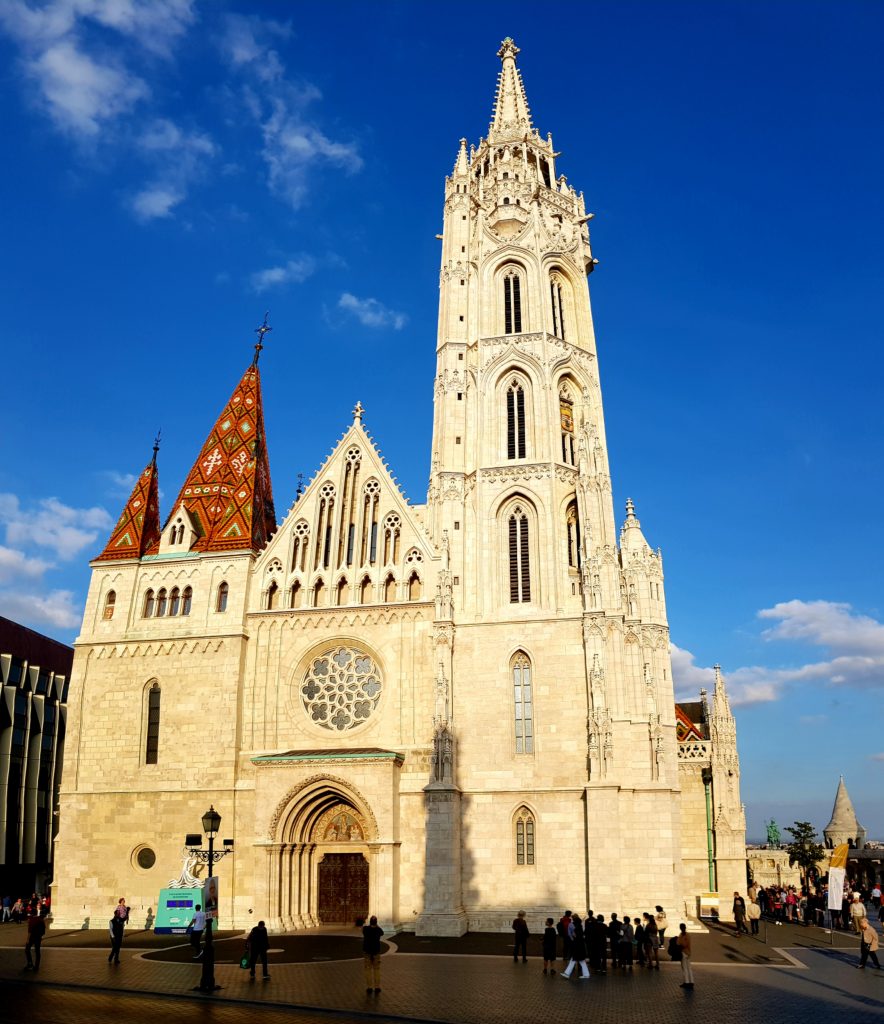
We passed a great view of the castle’s rear defensive walls…
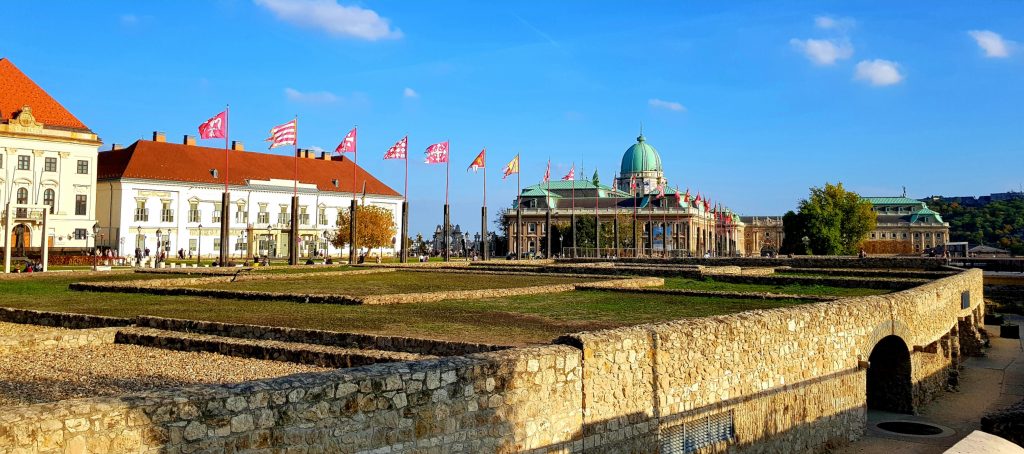
… and various statues …
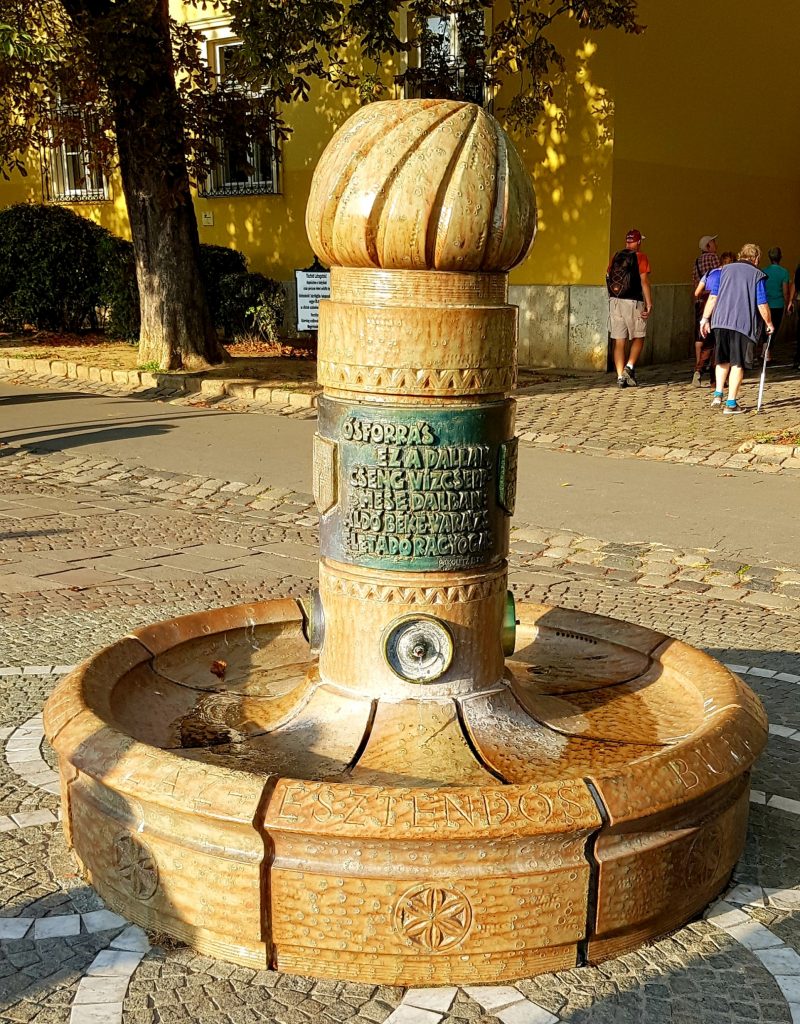
This peculiar statue was allegedly built by the communists to symbolise the unification of Buda and Pest. The general consensus was that that was a bit suggestive. Indeed it is affectionately known locally as the “Penis Fountain”!

In a more sober vein, here is Count András Hadik, a Hungarian nobleman, slightly famous for capturing the Prussian capital Berlin during the Seven Years’ War. Of course, he’s not as famous to us as is Andás Zewde (our cruise manager) (or even his dog, come to that)!

We elected to leave the tour and walk back to base. First stop – the Hilton hotel. This really is a Hilton unlike the hotel in Vukovar! We like to admire the floral display in the lobby …
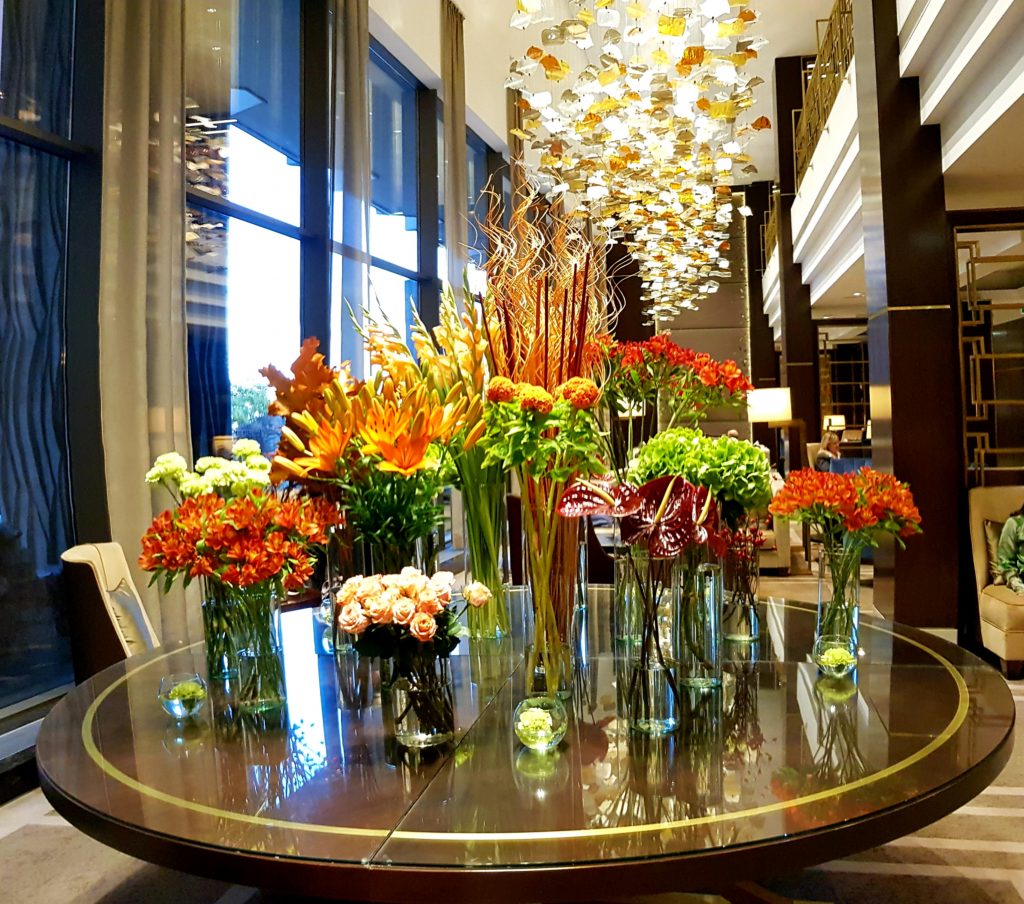
… and, of course bring plan B into action. A visit to their upmarket rest rooms! Funnily enough we met three Riviera local guides also admiring the flowers!
We walked down the hill next to the funicular railway which was busy transporting Japanese tourists up to the castle. We crossed the river on the famous Chain Bridge and back down the Eastern bank to our ship. We didn’t visit the holocaust memorial row of 60 shoes. This installation on the very edge of the river commemorates the 600,000 Jews taken from Hungary. It is esigned to rust away and disappear in 100 years. Neither did we enter the covered market which had been designed by the Eiffel company.
In the evening we were entertained by an Hungarian folk dance group.
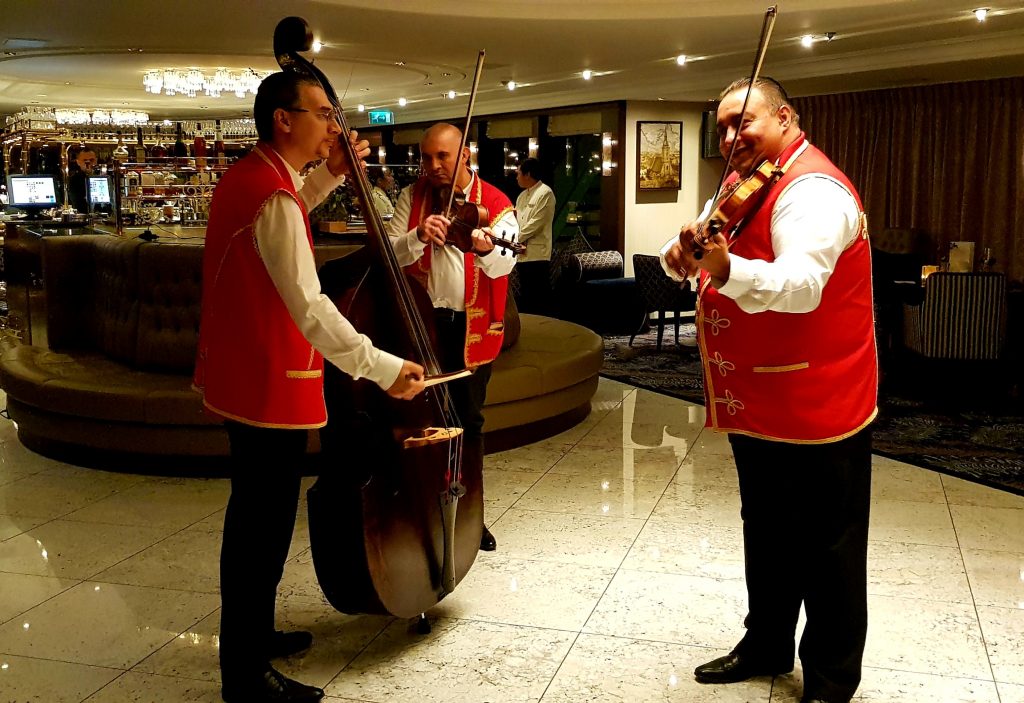
The red vests date back to wars of 1848. Gypsies were not allowed to carry arms. They just played music while the Austrians, Hungarians and Serbs shot each other! A red vest indicated that they were not to be seen as targets. I’ve just checked my photos from 2015 and this Is the very same group as we had on board then! However, the red vests are definitely a few sizes bigger this time!
So that’s our last full day on this cruise. All good!
“Ciao for Now”.
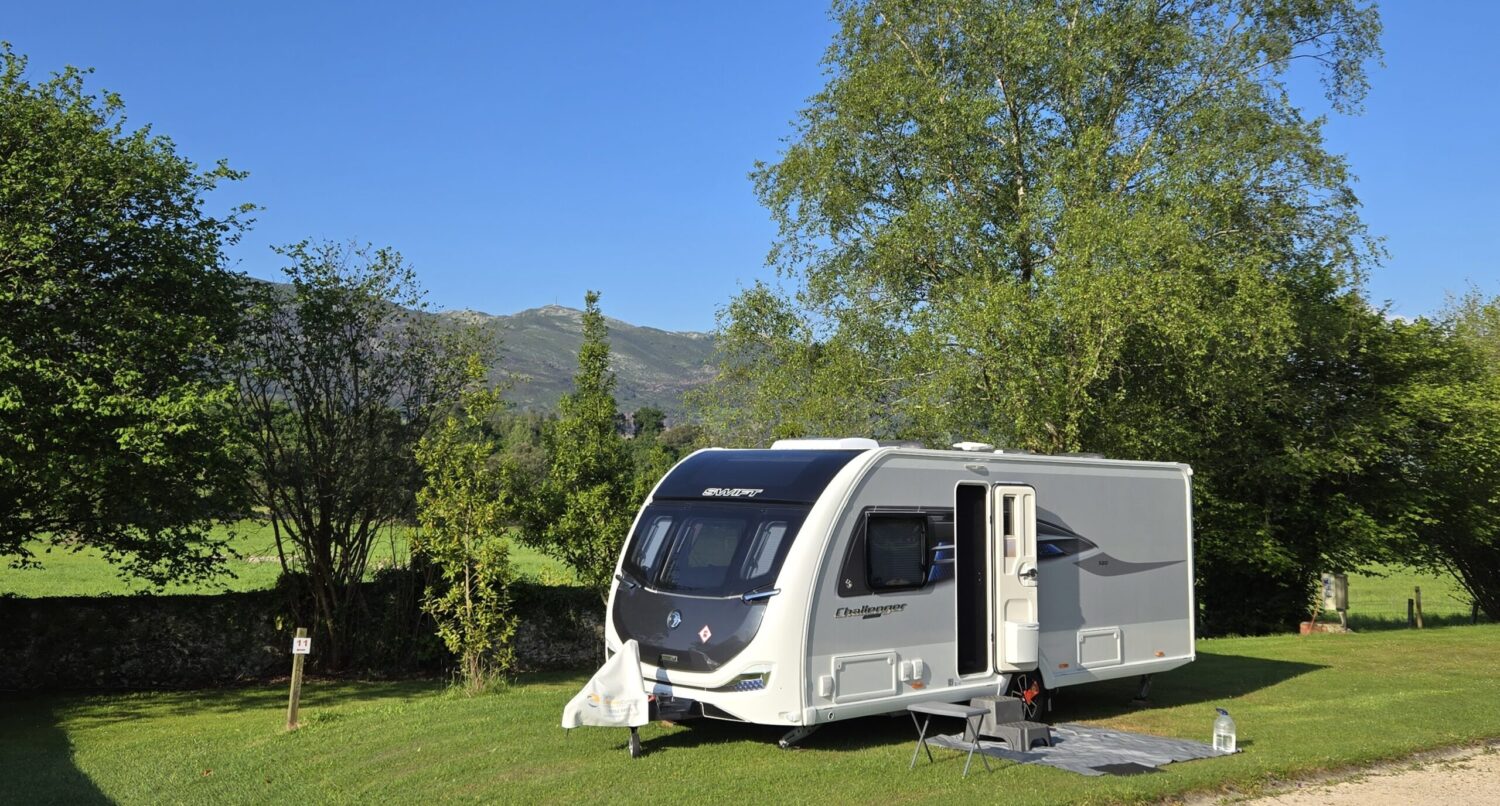
We loved Budapest, our final destination on our Scenic River cruise in September. We only had two nights – not nearly enough time to appreciate the city.